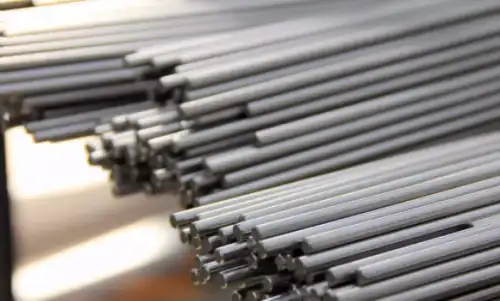In orthopedics, dentistry, and cardiovascular intervention, titanium alloy bars have become the core material of high-end medical devices due to their excellent biocompatibility, high specific strength, and corrosion resistance. This article will systematically analyze the process of processing medical titanium alloy bars from raw materials to finished products, and deeply explore its technical difficulties and innovative breakthroughs.

Special requirements for medical titanium alloy materials
1. Material selection standards
Main brands: TC4 (Ti-6Al-4V ELI), pure titanium (Gr1-Gr4), medical titanium alloy bars, new β-type titanium alloy (Ti-15Mo, Ti-12Ta-9Nb)
Key indicators: ultra-low interstitial elements (O≤0.13%, N≤0.05%, H≤0.012%), ensuring no cytotoxicity
Special treatment: secondary electron beam melting to eliminate the α brittle phase and improve fatigue life
2. International certification system
Must meet ASTM F136 (surgical implants), ISO 5832-3, and other standards
Domestic requirements: pass NMPA Class III medical device certification and comply with YY/T 0640-2022 medical metal standards
Core manufacturing process
1. High-purity melting technology
Vacuum consumable arc melting (VAR): three remelting processes, control the total amount of impurity elements <500ppm
Electron beam cold bed melting (EBCHM): effectively removes high-density inclusions (HDI <1/cm³)
Plasma arc melting (PAM): achieves 99.999% vacuum to ensure material purity
2. Hot working control system
Stage Process parameters Quality requirements
Forging and blanking β phase region (980±15℃), multi-directional forging, Grain size ≤ASTM 8 grade
Hot rolling forming, Two-stage temperature control (750-850℃), Diameter tolerance ±0.5mm
Precision forging and shaping Near β phase region isothermal forging Streamline continuity >95%
3. Microstructure regulation
Solution treatment: rapid water quenching in β phase (cooling rate > 50℃/s)
Aging strengthening: 480-550℃ for 8 hours, precipitation of nano-scale α phase (size 50-200nm)
Double annealing: β annealing + α + β annealing, obtain dual-state structure
Key technologies for precision machining
1. Ultra-precision forming
Multi-axis CNC turning: PCD tool, surface roughness Ra0.2μm
Micron-level straightening: straightness ≤0.05mm/m, ellipticity ≤0.01mm
Laser sizing: heat affected zone of cut <50μm
2. Surface engineering treatment
Process Technical parameters Functional characteristics
Electrolytic polishing Voltage 12V, temperature -30℃ Surface roughness Ra0.05μm
Micro-arc oxidation Pulse frequency 1000Hz Generate 50μm porous TiO₂ layer
HA coating, Plasma spraying, Bonding strength>35MPa
Full-process quality control system
1. Process detection technology
Online thermal imaging: real-time monitoring of processing temperature fluctuations (±3℃)
EBSD analysis: grain orientation difference>15° ratio<5%
X-ray residual stress detection: surface compressive stress>200MPa
2. Terminal detection standard
Testing items Method Qualification standard
Fatigue performance: Three-point bending test, 107 cycles without fracture
Biocompatibility Cytotoxicity test Survival rate>90%
Corrosion resistance, Potentiodynamic polarization test, Pitting potential>1.2V
Technology development trend
1. Additive manufacturing technology: development of medical titanium alloy powder (particle size 15-45μm)
2. Intelligent production: establishment of the MES system to achieve process parameter traceability
3. Surface functionalization: Research and development of antibacterial coating (Ag+ drug loading 0.5-2μg/cm²)
The manufacturing of medical titanium alloy rods integrates multidisciplinary technologies such as material science, precision machining, and biomedicine. Its process control accuracy reaches the micron level, and the product qualification rate must be guaranteed to be above 99.99%. With the development of 3D printing and nano-surface treatment technology, medical implants will continue to make breakthroughs in the direction of personalization and functionalization in the future.











